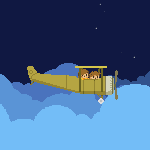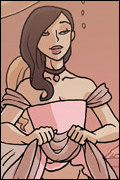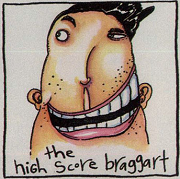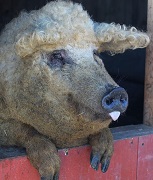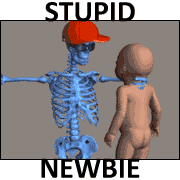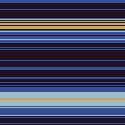|
https://twitter.com/JanelleCShane/status/1654839457370247169
|
|
|
|
|

|
| # ? May 26, 2024 15:20 |
|
Hey, isn't that bottom right one an SCP?
|
|
|
|
God I wish the eggplant emoji = dick meme was secured, contained, or protected away from society.
|
|
|
|
https://twitter.com/goodside/status/1657396491676164096
|
|
|
|
girl dick energy posted:Hey, isn't that bottom right one an SCP? a what?
|
|
|
|
Chatbots Don’t Know What Stuff Isn’t
|
|
|
|
Wafflecopper posted:a what? You will lose many, many hours of your life if you Google SCP.
|
|
|
|
Wafflecopper posted:a what? The main conceit is that most pages are formatted like internal documentation from the organization’s computers, about an individual object/anomaly/person/demigod/space wedgie/whatever.
|
|
|
|
girl dick energy posted:Basically a sci-fi horror wiki/collab project, about a Men In Black-style secret organization that tries to catalogue and contain impossible monsters and anomalies and such, so normal people can live in ignorant bliss. If you've played the (excellent) Control, that's 80% of the vibe
|
|
|
|
I think they used some kind of auto (AI???? They weren’t even censoring words lol but at least they didn’t have to pay anyone!! 
|
|
|
|
 cats holding a seance around a pentagram  the fast and the furious starring danny devito  firefighters putting out a house fire with jello  a chupacabra wearing sunglasses posing on main street america  a painting of glenn danzig eating hot dogs by norman rockwell  a dog wearing sunglasses giving a thumbs up  the hobbits hoot and holler as they discover an IHOP  beavis mowing the lawn, claymation  gandalf at a rave, poloroid  a cat wearing a kilt
|
|
|
|
rave gandalf in shades is so good. also all of the cat seances
|
|
|
|
fermun posted:
The bottom right is a powerful image
|
|
|
|
fermun posted:
|
|
|
|
fermun posted:
this absolutely owns bottom right is definitely the best of the best
|
|
|
|
fermun posted:
I particularly like how the food looks like what I would imagine a Shire-based IHOP to serve.
|
|
|
|
thats just Denny's
|
|
|
|
HiroProtagonist posted:this absolutely owns  an ent riding the subway  bruce willis eating a 5 foot long subway sandwich  robot eating a bowl of computer chips on the moon, science fiction  coolio on stage rapping about garden gnomes  still life picture of a meal of meatloaf and jelly beans  glenn danzig as an astronaut on a desert planet  glenn danzig wearing a tie-dye shirt i love how he's sad in all but the top right where it's not actually tie-dye and is just a psychedelic skull  glenn danzig, the emperor of the landfill  a picture of what the american flag looks like after being redesigned in 2077  bigfoot riding on the back of a centaur Cool, but not what I asked for on that one, probably it's going off of some very specific fantasy image since they all look so similar  a grizzly bear DJing a rave  racoons infiltrating a military base  hms dreadnought, ww1 battleship painted like a 1960s hippie van, peace signs, flowers, colorized
|
|
|
|
Beautiful!
|
|
|
|
fermun posted:The bottom right one looks normal at first and then after a second I can't help but notice Gandalf's got 6 fingers He just borrowed one from the top left
|
|
|
|
https://twitter.com/lesbiaudrey/status/1661426454490406912
|
|
|
|
Like with most of these sorts of "takedown" articles, a lot of what they point out comes from just plain bad prompting. With the right prompt, you can definitely get something fun and coherent, you just need to be more prescriptive with what you give it. These things are best utilized as tools, not a brainless "make me art" button.quote:I blinked my eyes open, my head pounding in the vice of last night’s booze. A woolly mouth tasted of the dark underbelly of the city, rank with scotch and cheap gin. My shabby flat looked like a cyclone had given it a real work-over. Papers were strewn about like the detritus of some forgotten caper, furniture knocked over, lampshades at crazy angles. A cracked mirror reflected a guy that looked like he'd spent the night trying to box his way out of a casket. From: quote:Write a story with the following beats:
|
|
|
|
Yeah, agreed. Plus it's pretty well understood that multiple steps will yield better results, i.e. having it generate an outline first, maybe describe some important characters, etc., and THEN ask it to do the important writing.
|
|
|
|
500 good dogs posted:Yeah, agreed. Plus it's pretty well understood that multiple steps will yield better results, i.e. having it generate an outline first, maybe describe some important characters, etc., and THEN ask it to do the important writing. feedmyleg posted:Like with most of these sorts of "takedown" articles, a lot of what they point out comes from just plain bad prompting. With the right prompt, you can definitely get something fun and coherent, you just need to be more prescriptive with what you give it. These things are best utilized as tools, not a brainless "make me art" button. 
|
|
|
|
they're talking about editing the chatgpt response, not providing it a better series of prompts
|
|
|
|
500 good dogs posted:Yeah, agreed. Plus it's pretty well understood that multiple steps will yield better results, i.e. having it generate an outline first, maybe describe some important characters, etc., and THEN ask it to do the important writing. Yeah but the people spamming ebooks to the Amazon marketplace aren't bothering to do that
|
|
|
|
500 good dogs posted:Yeah, agreed. Plus it's pretty well understood that multiple steps will yield better results, i.e. having it generate an outline first, maybe describe some important characters, etc., and THEN ask it to do the important writing. Yeah, I've been having really good success with my Indiana Jones Fan-fiction Generator, churning out outlines then expanding them. I've been trying to figure out how to create something that closely follows an episodic formula and can be extremely repetitive as a feature rather than a bug. It's exactly the sort of dumb nonsense that AI-generated writing is perfect for—a fun novelty, but nothing seriously challenging skilled writers yet. To make my generator, I fed it classic formulas used by serial writers in the 30s like Lester Dent's Doc Savage formula and other adventure fiction standards, had it summarize the movies and create a formula out of them, added breakdowns of how to write action sequences and story structure, fed it information about MacGuffins and mysteries and quirky character partners an antagonists and politics of the period, then gave it a list of parameters to output. quote:For fun, let's say that we're tasked with creating a new Indiana Jones adventure, but that we can't use any other characters or objects from any of the films. It makes a fun, fitting adventure pretty much every time. Occasionally you'll get a dud, or it'll hit on common themes too often (hence telling it not to use Egypt, Turkey, or Greece), but hitting the generate button again delivers something better in a few seconds. They're pretty repetitive without adding specific plot or character details into the prompt, but that's kind of the point. If I have a particular MacGuffin or story element I want to put into it, I say "Make sure to include the following elements: The Lambton Worm, an eccentric bookstore owner who is an expert in the supernatural, themes of income disparity..." and it'll generally feel very inventive and make the result significantly more interesting than the base-level prompt on its own. The more details you give it, the better the output. And I can ask it to generate me 20 MacGuffins, or 20 villains, or 20 love interests, and then I can cherry-pick the best of the bunch and feed them back in and tell it to include them, too. If I especially like a story it churns out, I copy and paste that description back into the prompt, then tell it to expand each act one at a time into 5 detailed scenes, and add those back to the prompt. Then I ask what each character is doing in each scene, then feed that back in. It's annoying when I reach a character limit, but then I can usually just ask it to summarize my prompt. I would LOVE to try this in a more automated way, or have a system that could have a 50,000+ word memory, but for now it's fun to play around with if tedious. No, it's not going to write the next Great American Novel, but if you want a robot to spit out throwaway nonsense that is exactly your brand of dorkiness, it's pretty great at it: quote:The screen fills with the bustling nightlife of 1938 New Orleans. Jazz music spills out onto the cobblestone streets, shadows flit about under dim streetlights, and the smell of Cajun cuisine wafts through the air. If I wanted to put the time effort and energy to have it actually spit out prose from this, I think it would probably be about on par with the quality of the 1990s tie-in novels. feedmyleg has a new favorite as of 05:17 on May 26, 2023 |
|
|
|
Another thing that these "takedowns" of AI often do is say "well this version of ChatGPT can't perfectly simulate whatever I want it to do, which means future versions will never do it either" I'm skeptical how far things can go before the computational requirements for improved models become overwhelming, but dismissing the whole future field due to the current state of ChatGPT is just dumb
|
|
|
|
Why would anyone read that poo poo is my question
|
|
|
|
It has absolutely no value except to the person who creates it for themselves. It's a way to make something disposable that tickles your brain wrinkles just right for a few minutes while you're high.
|
|
|
|
Maybe they should try listening to music or watching a really good movie
|
|
|
|
After several months, there is pretty much no entertainment left in this thing. Whenever a new feature is released, there's a short spike of interest, where you might want to check out just how badly a chat bot can bungle up summarising a let's play video from youtube or whatever, but that's it. There are non-entertainment purposes that are nice and neat, but generated Muppets in the style of Giger are now at best banal and boring.
|
|
|
|
I think it's pretty cool to read something that wasn't written by a human.
|
|
|
|
BoldFace posted:I think it's pretty cool to read something that wasn't written by a human. So I have a magnifying glass. With my magnifying glass I can hone in and see a single word in a single manuscript on my desk. This is fun but limited. What I'm going to do next is get a lot of manuscripts and open them all up on my desk with some automated articulated page turners. (In this analogy I am paying peanuts to gig workers in expanding economies to find me new books and tear out any pages with child porn). Meanwhile I get a hundred magnifying glass and rig them together with the page turners so that they can be focused on specific words in each manuscript. Next I start designing a dial I can flip from "Indiana Jones fan fic" to "how to wipe your butt" to "Goku romcon." Finally through massively automated artifice I connect the dials to a series of gears that probabilistically pick out the best sequence of words by moving the magnifying glass and pages. (In this analogy I am probably also paying those gig workers to help with the bulk of the artifice and then I clean off the burrs from the gears and call them mine). I turn the dial and in turn as I look through each sequential magnifying glass I spy a story I have not seen before. Who wrote that story? I'd say the original writers but there's room to debate that maybe I did. Or perhaps more fairly all those gig workers. We can say the machine did it but that puts us into odd territory about what things like the printing press or internet publishing are doing. Is my contraption any different than Readers Digest taking a dozen unpublished christian living essays because my contraption uses words as the assembling element and Readers Digest takes whole essays? What about the printing press, which takes elemental letters instead of cohesive works? What's the element that flips the equation from humans to machines? I fixed countless spelling mistakes in this post with spell check and autocorrect, but also in school essays in 1997. Was the computer writing for me in 1997?
|
|
|
|
BoldFace posted:I think it's pretty cool to read something that wasn't written by a human. Why? You’re just ascribing the human intelligence behind the tool to the tool itself *reheats leftovers* Wow can you believe a microwave prepared all this food??
|
|
|
|
What generative models do isn't something that humans do, but it is in certain limited ways similar. If you want to think clearly about the moral aspects of the situation, you should be very, very careful about anthropomorphizing it.
|
|
|
|
zedprime posted:It's still written by humans. Uncountable amounts without better auditing and sourcing requirements for large data models. My initial reaction would be to apply the same common sense criteria I would use for human authorship. If the source material is unrecognizable and a human author would not get blamed for plagiarism if they wrote the same text, then it most likely counts as an original work. The question of how much credit the machine deserves depends on how it was used. If the machine produces hundreds of pages of story from a short text prompt, then it sounds fair to give most, if not all, of the writing credit to it. If the machine takes a full script as an input and corrects spelling mistakes in it, then I don't think it needs to be credited at all.
|
|
|
|
Futanari Damacy posted:Why? You’re just ascribing the human intelligence behind the tool to the tool itself I don't make a distinction between intelligence and human intelligence. If my microwave turned a cold slice of pizza into a fresh meatloaf, I would say "thanks, chef".
|
|
|
|
With art, I think I just don't feel the same requirement to connect with the author - I find myself able to enjoy the output of what I know is a random amalgamation of all the artists who have ever lived, in a similar way to the way I enjoy art galleries. And I loving love art galleries AI text, I don't know if I can get over that hurdle yet. When I read I feel some kind of connection with the author and it makes me mostly dislike all current AI poo poo. I think it'll eventually get there, but for now I don't bother.
|
|
|
|

|
| # ? May 26, 2024 15:20 |
|
Bongo Bill posted:What generative models do isn't something that humans do, but it is in certain limited ways similar. If you want to think clearly about the moral aspects of the situation, you should be very, very careful about anthropomorphizing it. case in point, snapchat's "my ai" thingie has been teaching danish teens how to self harm  i do think you can do art with ai. i dont think prompt engineering is art, but it can be amusing. if you take the ai output and do something with it, it may become art. intent is what makes art. its a conversation between artist and spectator. cf collage or readymades. a pissoir is not art, but what duchamp did was. Carthag Tuek has a new favorite as of 18:13 on May 26, 2023 |
|
|



